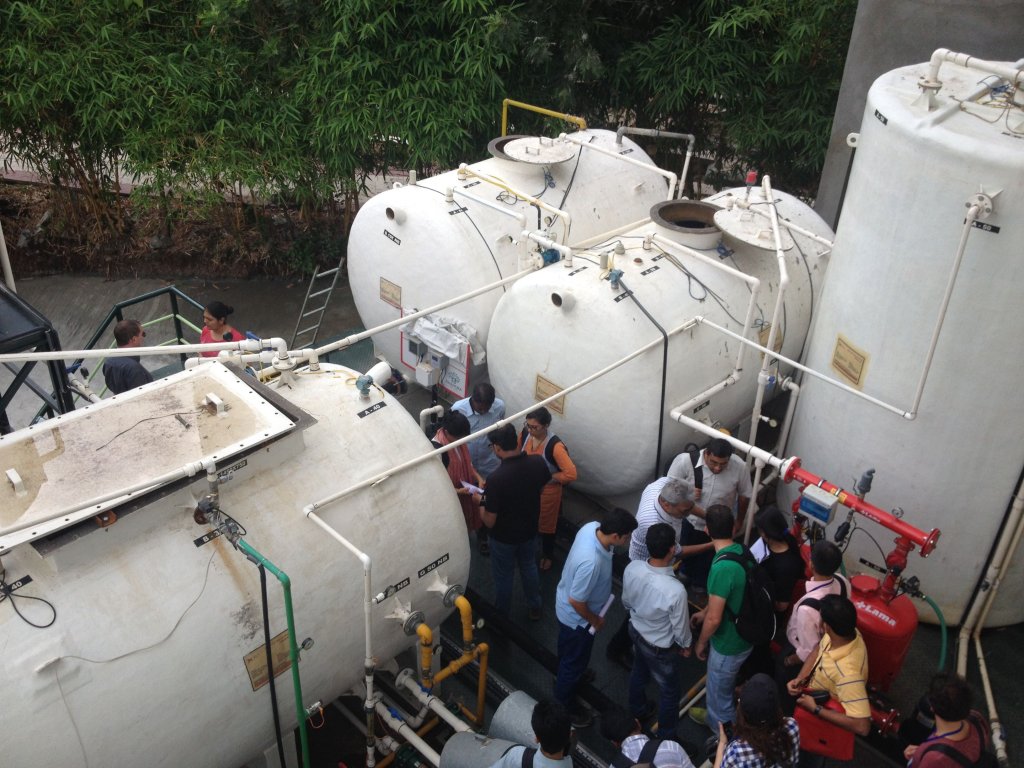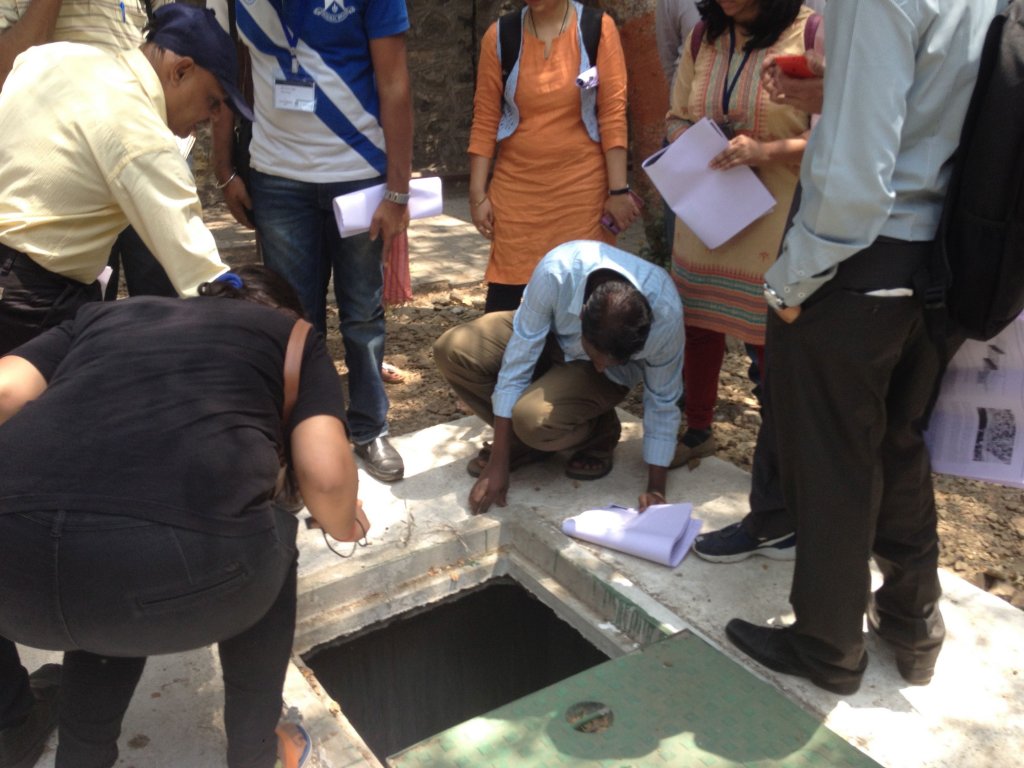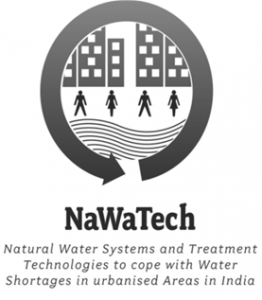India, home to over 1.2 billion people, is continuously growing and expanding its economics and standards of living. The rapid urbanisation, population growth, the technological and industrial boom are posing an enormous challenge to the water and sanitation situation of the country.
The flush-and-forget approach of the conventional sanitation systems does not offer a sustainable option to solve the sanitation crisis. As a consequence, only 21% of all the wastewater is ever treated, causing the contamination of 75% of all surface water across India. Innovative and unconventional technology solutions are required to improve the above situation. The invalid link is one step further in this direction
 Entrepreneurs visiting the ABR and MBR system at the AMANORA site in Pune, April 2015. Source: BARRETO 2015
Entrepreneurs visiting the ABR and MBR system at the AMANORA site in Pune, April 2015. Source: BARRETO 2015
This Indo-European Project aims to explore, assess and enhance the potential of natural and compact water treatment systems in order to improve their performance and reliability in the urban Indian context. The NaWaTech concept is based on the use optimisation of the different urban water flows by treating each of these flows via a modular natural system, taking into account the different nature and degree of pollution. For more information about the NaWaTech approach, visit the section with more details here.
The invalid link described and assessed a total of 23 technologies, which are described in the section Appropriate Technologies. There, the design and construction principles, the operation and maintenance, cost considerations, experiences in the world and in India, as well as advantages and disadvantages of each technology can be found.
A total of 6 NaWaTech systems conformed by key technologies were selected by the partners, which were implemented in Nagpur and Pune, in the Indian State of Maharashtra.

Entrepreneurs visiting the Anaerobic Baffle Reactor at CoEP College in Pune, April 2015. Source: BARRETO 2015
A combination of anaerobic treatments with constructed wetlands was implemented in the Hostel of the College of Engineering, Pune, that hosts 2000 students. COEP is the largest site under the project treating 180 cubic meters of wastewater per day in 3 separate units. A different configuration can be seen at the Ordnance Factory in Nagpur, where a total of 100 cubic meters of wastewater is being treated with an up-flow attached growth anaerobic filter. As a polishing treatment, a combination of horizontal sub-surface constructed wetlands, French wetlands, sludge drying reed beds and short rotation plantations have been implemented. Another excellent example of different combinations of wetlands has been established at Dayanand Park, Nagpur.
Furthermore, an eco-filtration bank was implemented at Indradhanushya Environment and citizenship centre, Pune, meanwhile another implementation using similar principles as the wetlands is the vertical garden at the Maharashtra Jeevan Pradhikaran. In addition to natural systems, Sequence Batch Reactors (SBR) and Membrane Bioreactors (MBR) have been implemented in Amanora Park Town, Pune. The system is set-up in a 50 m sq. space and is completely automated. The SBR and MBR are installed in parallel and treat 40 cubic meters of wastewater per day.
Details of all project sites can be found in the section case studies.



